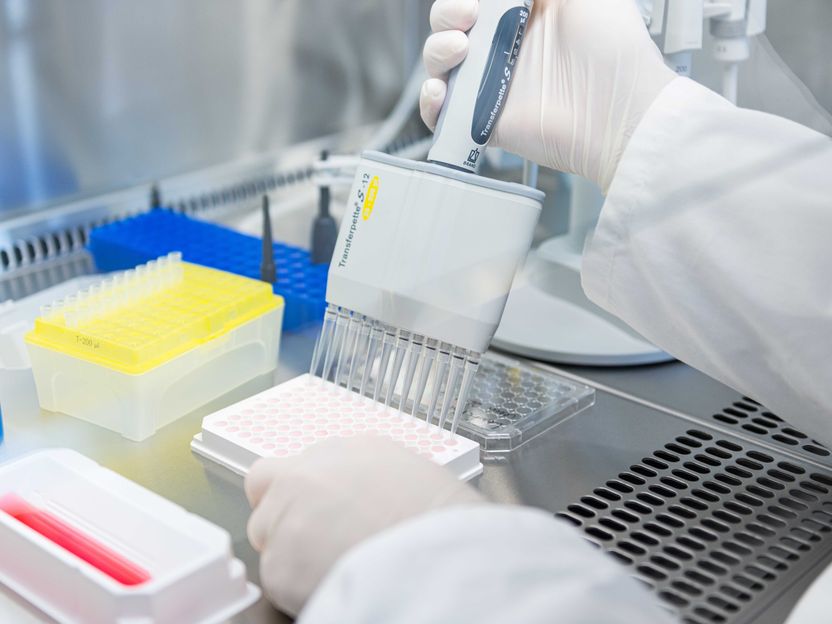What brings olfactory receptors to the cell surface
"Postcodes" identified for odour sensors
Advertisement
A team of scientists led by Dietmar Krautwurst from the Leibniz Institute of food Systems Biology at the Technical University of Munich has now identified address codes in odorant receptor proteins for the first time. Similar to postal codes, the codes ensure that the sensor proteins are transported from the cell interior to the cell surface in order to start their work as scent detectors. The new findings could contribute to the development of novel test systems with which the odorant profiles of foodstuffs can be analyzed in a high-throughput procedure and thus better controlled.

Filling a 96-well cell culture plate with nutrient medium
C. Schranner Leibniz-LSB@TUM
The genes of the approximately 400 human odorant receptor types have been identified for about 20 years. Nevertheless, for about 80 percent of these sensor proteins it is still not known to which odorants they react. Knowing this, however, is an important prerequisite for developing bio-based "artificial noses" for food controls.
Cellular test systems
But how can this problem be solved? Normally, scientists use cellular test systems to find out to which substances a receptor protein reacts. However, a particular problem of olfactory receptors is that they often get stuck inside the test cells and do not reach the cell surface. Even a suitable odorant can then not dock to the receptor and activate it. Thus, an odorant assignment is not possible.
But why do odorant receptors so often get stuck in test cells and what molecular mechanisms are involved in the transport of odorant receptors to the cell surface? In order to help answer these fundamental questions, the team of scientists examined and compared the protein sequences of 4,808 olfactory receptors from eight different species using statistical and phylogenetic analysis methods. This enabled the team to identify highly conserved amino acid motifs. These are localized in the respective C-terminal end of the receptor proteins, which protrudes into the cell interior (cytoplasm).
Address codes identified
"Additional structure-function analyses we performed indicate that individual of the identified amino acids and also their combination function like address codes or, in highly simplified terms, like 'postal codes'," reports study leader Dietmar Krautwurst. "Such amino acid motifs were previously unknown for olfactory receptors," the biologist continues. "We assume that the odorant receptor molecules interact with cellular proteins via these motifs, which guide the sensor proteins to their site of action on the cell surface via mechanisms that are still unknown."
The researchers led by Dietmar Krautwurst hope that their new findings will help to optimize cellular test systems for odorant receptors in such a way that it will soon be possible to determine the corresponding odorant partners for each odorant receptor. The team of scientists agrees that only if the recognition spectra of as many odour receptors as possible are known will it be possible to develop biobased test systems with which the odour profiles of foodstuffs can be reliably and quickly monitored during production.
Note: This article has been translated using a computer system without human intervention. LUMITOS offers these automatic translations to present a wider range of current news. Since this article has been translated with automatic translation, it is possible that it contains errors in vocabulary, syntax or grammar. The original article in German can be found here.























































